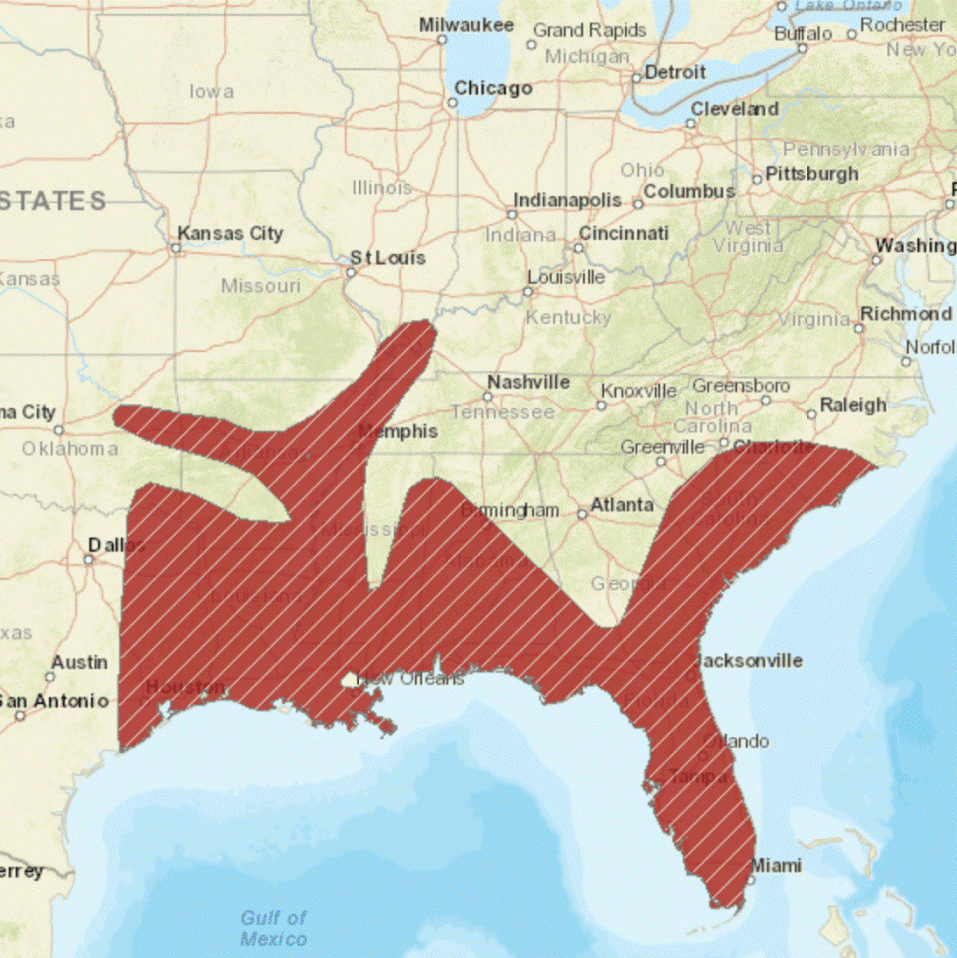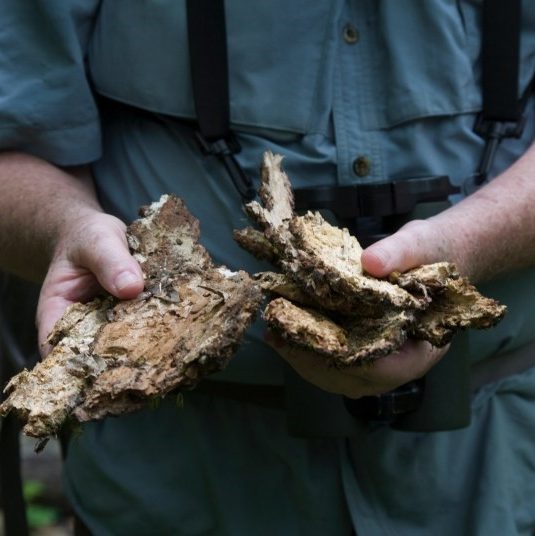Natural History
What is known about the Ivory-billed Woodpecker’s natural history is pieced together from historical accounts and from the work of James T. Tanner, the Cornell ornithologist who carried out the only formal study of the species. The species had an expansive and varied range in pre-colonial times which became concentrated in the forests of the southeastern United States as populations decreased. As a cavity nester, the Ivory-billed Woodpecker favors forested areas with large trees and is a bark forager, stripping bark from trees to extract beetle larvae in a unique method called bark scaling. The largest woodpecker species found north of Mexico, Ivorybills have heavy, pale bills and a distinctive white “saddle,” with white lines down the back and white panels in the folded wings. The calls of the Ivorybill are described as “kent” calls, and the species has a “double knock” pattern, rather than drumming like most woodpeckers.
Read More:
Press inquiries: please contact [email protected] or call 412-258-1144.
Support this important project by directing your donation to Project Principalis.
Support Our Work

